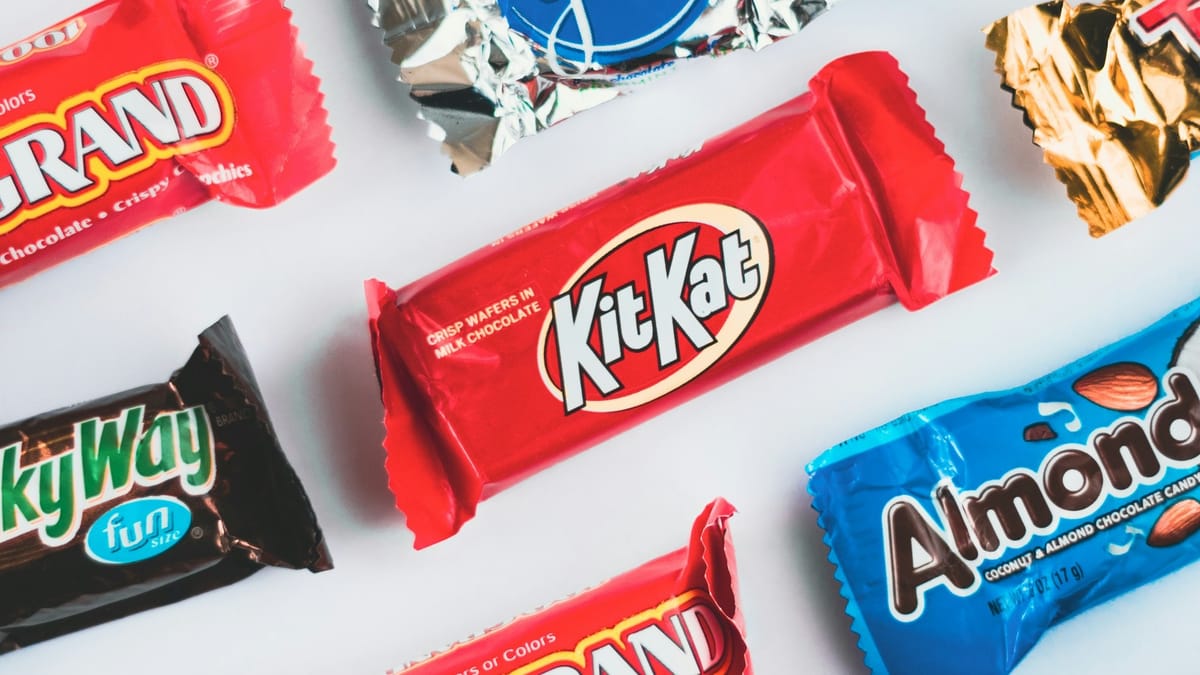Trans Fats Uncovered: How to Spot Them and Why You Should Care
Ever wondered if your favorite snack could be quietly putting your heart at risk? Trans fats—those sneaky ingredients hiding in processed foods—are linked to serious health issues, yet many of us still don’t know how to avoid them.

Ever wondered if your favorite snack could be quietly putting your heart at risk? Trans fats—those sneaky ingredients hiding in processed foods—are linked to serious health issues, yet many of us still don’t know how to avoid them.
We live in a world where convenience often wins over nutrition. From packaged snacks to fast food, it’s easy to grab something quick without thinking twice about what’s inside. But there’s one ingredient that’s caused enough trouble to be banned in many countries: trans fats. These are a type of unsaturated fat, mostly created through an industrial process called hydrogenation, which turns liquid oils into solid fats. This not only makes foods last longer but also gives them a smoother texture—making them especially popular in processed and fried foods.
The problem? Trans fats are bad news for your health. They’re known to raise your “bad” cholesterol (LDL) while lowering your “good” cholesterol (HDL), which can lead to clogged arteries and a higher risk of heart disease. In fact, the FDA (Food and Drug Administration) has labeled them “generally not recognized as safe” and has banned artificial trans fats in most foods since 2018. Still, you can find them lingering in some imported products or items made before the ban. Even foods that claim “0g trans fat” might not be completely free of them, thanks to labeling loopholes that allow small amounts to slip through.
Trans fats aren’t just a heart issue, either. They’re linked to other health problems like type 2 diabetes, fatty liver disease, and even inflammation throughout the body. Studies have shown they can mess with your liver and kidney function, too—so avoiding them is about more than just your heart.
Luckily, by reading labels and watching for ingredients like “hydrogenated” or “partially hydrogenated oils,” you can dodge most artificial trans fats. And while small amounts exist naturally in meat and dairy, these are much less harmful than the industrial kind. With over five million deaths each year tied to trans fat-related diseases, being aware and making smarter choices can make a real difference for your health.
How to Outsmart Trans Fats at the Grocery Store
Have you ever wondered if that “0g trans fat” label on your favorite snack actually means what it says? Or do you find yourself confused by the long list of ingredients on packaged foods?
If you care about your heart health and want to avoid the risks that come with eating trans fats, it’s time to start reading the labels.
Let’s start with the Nutrition Facts panel, which you’ll find on the back of nearly every packaged food. Most people glance at the “Trans Fat” line under “Total Fat” and feel reassured if it says “0g.” But did you know that, according to FDA rules, companies can round down and list “0g” if their product contains less than 0.5 grams of trans fat per serving?
That means you could still be eating small amounts of trans fat without realizing it—especially if you eat more than one serving. Have you ever noticed how tiny some serving sizes are? If you eat double or triple the amount listed, those “insignificant” amounts can add up fast. Imagine eating three servings of crackers, each with just under 0.5g of trans fat per serving—you could easily consume more than the recommended daily limit without even knowing it.
But don’t stop at the numbers. The real story is often told in the ingredients list. Do you take a second to scan for “hydrogenated” or “partially hydrogenated oils”? These are the telltale signs of artificial trans fats, the ones that have been linked to higher LDL (“bad”) cholesterol, lower HDL (“good”) cholesterol, and a greater risk of heart disease, type 2 diabetes, and even liver and kidney problems. Even if the Nutrition Facts panel claims “zero,” the presence of these oils means there’s still some trans fat in the product. Watch out for commonly hydrogenated oils like soybean, canola, and palm oil—if you see them listed as “hydrogenated,” it’s best to steer clear.
You might also see labels boasting “No Trans Fats” or “Zero Trans Fats.” While these can be helpful, don’t take them at face value—always double-check the ingredients. And remember, processed foods, fried snacks, and certain margarines are notorious for containing trans fats, even if the packaging looks reassuring. Fast foods and imported products can also slip through regulatory cracks.
Finally, it’s worth knowing that not all trans fats are created equal. Small amounts occur naturally in meat and dairy, and these are generally considered less harmful than the artificial kind found in processed foods. Still, moderation is key. So, next time you’re shopping, will you just glance at the bold “0g” or dig a little deeper? By reading both the Nutrition Facts panel and the ingredients list, you’re taking a simple but powerful step to protect your health. Isn’t that worth an extra minute in the grocery aisle?
Decoding Certifications and Hidden Sources
The Truth About Trans Fats
Have you ever reached for a box of cookies or a tub of margarine because the label proudly declared “No Trans Fats” or “Zero Trans Fats”?
While these certifications can be a helpful starting point, they’re not a guarantee that the product is entirely free of trans fats. In fact, food labeling rules allow products with less than 0.5 grams of trans fat per serving to round down and claim “zero” on the packaging.
That means if you eat more than one serving, which is easy to do with snacks or baked goods, you could still be consuming a measurable amount of trans fats. So, even when a product carries a reassuring certification, it’s always smart to flip the package over and check the ingredients list for “hydrogenated” or “partially hydrogenated oils.” These are the main culprits when it comes to artificial trans fats, and their presence should make you think twice before adding that item to your cart.
But trans fats aren’t just hiding behind misleading labels, they’re also present in some of our favorite foods. Processed foods like crackers, chips, pastries, and packaged baked goods are notorious for containing trans fats, especially if they were made before the FDA’s 2018 ban on artificial trans fats or are imported from countries with less strict regulations.
Even foods that don’t seem like obvious offenders, such as certain margarines or non-dairy creamers, can be significant sources. Many restaurants and fast food chains have made efforts to reduce or eliminate trans fats, but depending on where you eat, you could still be getting more than you bargained for—especially if the oil used for frying contains partially hydrogenated fats.
It’s also important to understand the difference between artificial and natural trans fats. While most of the trans fats in our diets come from industrial hydrogenation, a small amount occurs naturally in animal products like beef, milk, and cheese. The good news is that these naturally occurring trans fats are generally considered less harmful than the artificial kind, and some studies even suggest they might have neutral or slightly beneficial effects when eaten in moderation. Still, moderation is key—no type of trans fat is entirely risk-free, especially if your overall diet is high in processed foods or low in fruits and vegetables.
Next time you’re shopping, don’t just trust the front-of-package claims or flashy certifications. Ask yourself: have I checked the ingredients for hidden sources? Am I aware of how much I’m really eating, especially if I tend to go back for seconds? By staying curious and informed, you can avoid the worst offenders and make choices that truly support your long-term health. Isn’t it worth a little extra effort to keep those hidden trans fats off your plate?
What the FDA Ban on Trans Fats Really Means for Your Food
You might have heard that artificial trans fats are banned in the United States, but what does that actually mean for the foods you find on your grocery store shelves?
In 2018, the FDA made a landmark decision to ban the use of artificial trans fats—specifically those created through the industrial process of hydrogenation—in most food products. This move was driven by overwhelming scientific evidence showing that artificial trans fats raise “bad” LDL cholesterol, lower “good” HDL cholesterol, and dramatically increase the risk of heart disease, stroke, and other chronic illnesses. The ban has led to a significant reduction in the presence of these harmful fats in the American food supply.
However, the FDA ban isn’t a complete erasure of trans fats from your diet. First, it’s important to understand that the ban applies only to artificial trans fats found in partially hydrogenated oils, which were once common in processed snacks, baked goods, and certain margarines. Foods produced before the 2018 deadline could still contain artificial trans fats, and some imported products from countries with less strict regulations may also slip through.
If you’re someone who enjoys trying international treats or finds older packaged goods in the back of your pantry, it’s wise to check both the Nutrition Facts panel and the ingredients list for any sign of “hydrogenated” or “partially hydrogenated oils.”
Another key point is that the FDA ban does not apply to naturally occurring trans fats. These are found in small amounts in animal products like beef, milk, and cheese. While natural trans fats are generally considered less harmful than their artificial counterparts, they are still best consumed in moderation as part of a balanced diet. So, even with the ban in place, it’s still possible to encounter trans fats in everyday foods—especially if you eat multiple servings or indulge in processed or fried foods.
It’s also worth noting that labeling rules allow products with less than 0.5 grams of trans fat per serving to round down and claim “0g trans fat” on the label. This means that if you eat more than one serving, you could still be consuming more trans fat than you realize. That’s why it remains important to be vigilant: always check both the Nutrition Facts panel and the ingredients list, and be cautious with processed, fried, or imported foods.
The FDA’s ban on artificial trans fats has made the American food supply much safer, but it hasn’t eliminated trans fats entirely. By staying aware of labeling loopholes and hidden sources, and by making a habit of reading ingredient lists, you can continue to protect your health and make smarter choices for you and your family. The extra attention you give at the grocery store can make a real difference in your long-term well-being.
Peter’s Wake-Up Call in the Snack Aisle
A few years ago, Peter never thought twice about his snack choices. He’d grab a box of his favorite cookies, comforted by the bold “Zero Trans Fats” label on the front. But after a routine checkup revealed his cholesterol was creeping up, Peter started paying closer attention.
One afternoon, standing in the grocery aisle, he decided to flip the box over and read the fine print. To his surprise, the ingredients list included “partially hydrogenated oils”—the very thing he’d heard was linked to heart disease. He realized that, despite the “zero” claim, small amounts of trans fat could still be hiding inside, especially if he ate more than one serving.
That moment hit Peter hard. He thought about his family history of heart problems and how easy it was to be misled by packaging. From then on, he made it a habit to check both the Nutrition Facts panel and the ingredients list, not just the flashy labels on the front. Peter’s story is a reminder that protecting your health means looking past marketing and understanding what’s really in your food. Sometimes, just a few seconds of label reading can make all the difference for your heart—and your future.
Your Top Questions Answered
1. What exactly are trans fats?
Trans fats are a type of unsaturated fat. Most are artificially created through hydrogenation, a process that turns liquid oils into solid fats to improve texture and shelf life. While small amounts naturally occur in meat and dairy, the majority in our diets come from processed foods.
2. Why are trans fats so bad for your health?
Trans fats raise your “bad” LDL cholesterol and lower your “good” HDL cholesterol. This combination increases the risk of plaque buildup in arteries, leading to heart disease, stroke, and other cardiovascular problems. They’re also linked to type 2 diabetes, liver and kidney issues, and systemic inflammation.
3. Where are trans fats most commonly found?
You’ll find them in processed snacks like chips, crackers, cookies, pastries, fried foods, and certain margarines. Fast food, doughnuts, frozen pizzas, and non-dairy creamers can also contain trans fats, especially if they list “partially hydrogenated oils” in the ingredients.
4. How can I spot trans fats on food labels?
Look for the “Trans Fat” line under “Total Fat” on the Nutrition Facts panel. Remember, “0g” can mean up to 0.5g per serving due to FDA rounding rules. Always check the ingredients list for “hydrogenated” or “partially hydrogenated oils” as a red flag.
5. Are “No Trans Fats” or “Zero Trans Fats” labels trustworthy?
These labels can be helpful, but they aren’t foolproof. Products can still contain small amounts of trans fats and claim “zero” if it’s less than 0.5g per serving. Always double-check the ingredients list.
6. What’s the difference between natural and artificial trans fats?
Natural trans fats are found in small amounts in animal products like milk and beef and are considered less harmful. Artificial trans fats, made through hydrogenation and found in processed foods, are much more dangerous for your health.
7. Has the FDA banned trans fats?
Yes, the FDA banned most artificial trans fats in U.S. foods as of 2018. However, foods made before the ban or imported from countries with less strict regulations may still contain them. Natural trans fats in animal products are not banned.
8. Why did the FDA ban artificial trans fats?
The ban was enacted because artificial trans fats significantly increase the risk of heart disease and other chronic illnesses. The FDA determined they are “generally not recognized as safe” for consumption.
9. Can eating a little bit of trans fat still harm me?
Even small amounts add up, especially if you eat multiple servings of processed foods. There is no safe level of artificial trans fat intake—reducing it as much as possible is best for your health.
10. What are the worst foods for hidden trans fats?
Historically, margarine, fried foods (like doughnuts and fries), processed snacks, and commercial baked goods have been the biggest sources. Always check labels and ingredients, even if the product claims to be trans fat-free.
Key Takeaways
- Trans fats are mostly artificial and harmful:
Most trans fats in our diets come from industrially hydrogenated oils, which are linked to increased risk of heart disease and other health problems. - Check the Nutrition Facts panel carefully:
Even if a label says “0g trans fat,” products can still contain up to 0.5g per serving due to FDA rounding rules—multiple servings can add up. - Always inspect the ingredients list:
Look for “hydrogenated” or “partially hydrogenated oils”—these are clear indicators of artificial trans fats, regardless of what the Nutrition Facts panel claims. - Don’t rely solely on “No Trans Fats” or “Zero Trans Fats” labels:
Certifications can be helpful, but always double-check the ingredients for hidden sources of trans fats. - Processed and fried foods are common culprits:
Baked goods, snack foods, fried items, and some margarines often contain trans fats, especially if made before the 2018 FDA ban or imported from abroad. - Fast food and restaurant items may still contain trans fats:
Some fried foods, like french fries and doughnuts, can include trans fats even if not explicitly listed. - Natural trans fats are less harmful but should still be limited:
Small amounts found in meat and dairy are generally considered less risky than artificial types, but moderation is important. - The FDA has banned most artificial trans fats:
As of 2018, artificial trans fats are banned in most U.S. foods, but older products and imports may still contain them. - Health risks go beyond the heart:
Trans fats are linked not only to heart disease, but also to type 2 diabetes, liver and kidney issues, and systemic inflammation. - Being a smart label reader protects your health:
By checking both the Nutrition Facts and ingredients list, and being cautious with processed and fried foods, you can significantly reduce your trans fat intake and support long-term well-being.
References
- https://www.fda.gov/food/food-additives-petitions/final-determination-regarding-partially-hydrogenated-oils-removal-food
- https://www.who.int/initiatives/replace-trans-fat
- https://www.cdc.gov/nutrition/data-statistics/know-your-limit-for-trans-fat.htmlhttps://www.hsph.harvard.edu/nutritionsource/what-should-you-eat/fats-and-cholesterol/types-of-fat/transfat/https://www.heart.org/en/healthy-living/healthy-eating/eat-smart/fats/trans-fat
- https://www.mayoclinic.org/diseases-conditions/heart-disease/in-depth/trans-fat/art-20046114
- https://my.clevelandclinic.org/health/articles/11208-trans-fats
- https://www.researchgate.net/publication/367243380_Cholesterol_saturated_fats_and_trans_fats
- https://www.mdpi.com/2218-1989/14/8/442
- https://pubmed.ncbi.nlm.nih.gov/16713393/
- https://www.sciencedirect.com/science/article/abs/pii/B9780128112977000263
- https://www.sciencedirect.com/science/article/pii/S0306919223001136
- https://pmc.ncbi.nlm.nih.gov/articles/PMC10801378/
- https://ideas.repec.org/a/kap/regeco/v55y2019i3d10.1007_s11149-019-09387-8.html
This article was written by Ariadna Paniagua, an experienced writer and editor for several institutions, papers, and websites.




